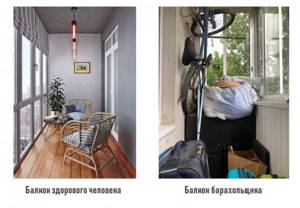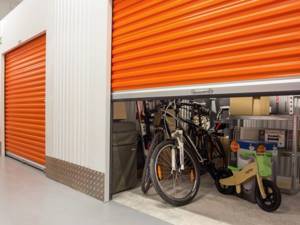What unnecessary things should I get rid of?
You won't wear them again. There is a rule - if you haven’t worn an item for more than a year and a half, feel free to say goodbye to it. There's a 99% chance you won't wear it again. And we don’t need extra things in the closet.
They are out of fashion. No matter how beautiful these clothes are, they will no longer look as fresh as before.
Irrelevant things. Suppose you changed the office with its strict dress code to freelance or went on maternity leave and do not plan to return. In this case, it is unlikely that you will need all these formal suits and black skirts.
Clothes don't fit. If you've had pants and skirts lying around for a long time that are too small or too big for you, get rid of them without regret. Have you noticed how burdensome you feel with the thought “when I return to my previous size, then I’ll wear it again”? Let's make life a little more enjoyable.
Clothes that have lost their appearance. Holes, stains that cannot be washed off, stretched T-shirts and knees - we leave all this in the past. Don't relegate it to loungewear because it's a shame - you'll feel better in neat sets. This category also includes stockings/socks/tights with holes and arrows.
Underwear that you have been wearing for more than 1.5-2 years.
Clothes that remind you of unpleasant events. Think for yourself, if just the sight of it evokes negative emotions, why keep such a burden in your wardrobe? Yes, we get rid of it, even if it is in good condition or cost you a lot.
Charitable foundations that accept clothing for distribution to other people or for recycling:
https://vtoroe.ru/
https://www.doctorliza.ru/
https://sofiafond.ru/
https://dobrove.ru/
Buy clothes made from durable materials
It is better to choose clothes made from denim and lyocell (fabric based on fibers from eucalyptus wood), as well as lined clothing - these products are stronger than others and last longer.
It is also worth paying attention to clothes made from recycled fabric and organic cotton. “You can even buy clothes made from waste milk, tea, coffee and coconuts. By choosing alternative fabrics, you encourage brands to innovate,” experts say.
Be sure to pay attention to the seams. “Turn the thing inside out and take a good look. Quality clothing has strong seams, hems, stitching and finishing. Carelessly sewn products have flimsy stitching and can quickly unravel, the authors note. -Shorter stitches grab and hold the fabric more securely than longer stitches. The double stitch overlock seam adds durability.”
Here's another useful tip:
Choose things that come from plants
As an alternative to products of animal origin, the authors recommend considering, say, vegan leather and faux fur - from companies such as Ría studio, Botanita. And if you definitely want to buy something made of genuine leather, then it is better to choose it at a second-hand store, so as not to create additional demand for leather.
Things that need repair
Needs to be sutured or shortened. A small life hack: clothes will fit better if, after purchase, you customize them to fit yourself in a tailor shop. Don’t skimp on small amounts, because things that fit your body will look more impressive and will justify the cost of modification.
Repair a zipper, clasp, sew on a button. Most often, outerwear requires such repairs - check carefully whether there are items in your wardrobe that need “help.”
And finally
Don't overdo it! After all, in an emotional impulse, you can accidentally throw away things that are really dear to your heart and memory, which will be mistakenly taken for trash. For example, an old photo album with your childhood photographs, your son's first drawings, or a napkin embroidered by your daughter's hands. For such things, you can allocate a separate shelf, all the photographs and drawings dear to your heart can be put in a special album, the crafts of your children or grandchildren can be framed and placed next to them. And they will no longer get lost under a pile of old newspapers and empty boxes.
Remember, order and comfort in your home is entirely your own doing!
Did you like the article? Help others learn about this article by clicking on the social media button!
The best part is the things we leave behind
Clothes that are in good condition, that you can put on right then and there and that you wear most often. Another life hack: try hanging all the things you use during the week on a separate rail. We should save this part of the wardrobe first (with the exception of damaged items).
Season trends. The item at the height of fashion? Great, let’s leave it and combine it with basic wardrobe items in everyday looks.
Things that combine with each other. It happens that there is a jacket that is beautiful in itself, but does not suit anything. And there are things that go well with most of the wardrobe and harmoniously connect its disparate items with each other.
Take proper care of your clothes
“The convenient habit of pushing clothes into the drum is deeply ingrained in our minds. We mistakenly believe that if our clothes don't smell like lavender fabric softener or some other artificial scent, they must be stale! - the book notes.
If we are not talking about synthetic fabrics, then you can easily stretch the intervals between washings: “The advantages are obvious: the less often you wash, the more time and money you save. Plus, you use less energy, water and detergents, which are harmful to the environment. And by washing your clothes less often, you reduce their overall wear and tear.”
At the same time, many things with a slight smell of socks can be refreshed by regular airing or a special spray. “Hang your clothes anywhere where air circulates—outside, on a balcony, or next to an open window. This is the simplest method of care, it does not require any costs, and there is no harm to the environment,” the authors of the book advise.

Stains can be removed point by point, without general washing. “Learn more about common types of stains so you understand why they are dangerous and how to deal with them. Grease, grass, dirt - everything requires its own approach. Your first reaction will often determine whether the stain goes away completely or stays forever, so proceed wisely. Look for natural stain removers on supermarket shelves. Among them are Seventh Generation, Method and Ecover,” experts give an example.
Here are some more useful tips:
Do not wash at 40°C
“Many of us are used to washing at 40°C or higher. But at the same time, our money is washed down the drain because we spend it on heating water, not to mention the increased risk of damage to clothes. It is recommended to reduce the temperature to 30 °C,” the book says.
Air dry things
Do not dry clothes in an automatic dryer, but hang them on a line or indoors on a fold-out drying rack. To avoid ironing, the authors recommend hanging clothes on a hanger while they are still damp: “Some lighter fabrics, such as cotton, polyester and silk, can be wrinkle-free by simply hanging them on a hanger in the bathroom and letting the steam do the work for you. This trick is especially good when traveling.”
Store clothes in covers
Store clothes made of delicate fabrics in covers, but not in plastic ones, as they “do not allow air to pass through, accumulate moisture and thereby create an ideal breeding ground for mold, mildew and even cause discoloration of the fabric.” It is worth choosing “breathable” cotton covers. Store shoes vertically, stuffed with newspapers.
List of basic things
After we got rid of the unnecessary stuff in our closets and our heads (isn’t it easier?), we make a list of what you need to buy.
Here is a list of the most basic things that it is advisable to have in every wardrobe:
- classic blue jeans
- White shirt
- a pair of T-shirts (white and beige)
- simple black dress for all occasions
- stylish plain home suit made of natural fabric
- nude lingerie set
- sand trench coat
- jumper
Your list should not be limited to the base - play, buy bright items that will match the base. But do it wisely - if you are lost, it is better to seek help from a stylist. At the same time, the basic wardrobe will be the basis on which you can build any images - romantic, daring and trendy.
Step by step
This method has already gained considerable popularity on the Internet, its effectiveness has already been repeatedly tested by many honored “Plyushkins”, who are no longer “Plyushkins” at all. This method is not designed for one day, so it is ideal for those who are disgusted by the thought of immediately parting with all their junk, lovingly accumulated over many years. Take a large plastic bag and quickly, without thinking too much, find 27 things and objects in your environment that you can throw away.
Take a closer look - in any home you will find such things - a magazine from three months ago, used batteries, a sock, the pair of which went missing a year ago, and so on. Each time you can move on to larger and larger things - an old vase, a beautiful but unnecessary coffee can, a figurine of a dog with a broken paw, a mug without a handle, a chair without a leg, and so on.
The method is recommended to be performed daily, or at least two to three times a week. Parting with a small number of things once a day is not such a big problem, and your home will gradually get rid of most of the completely unnecessary items. Regular “races around the house” with a garbage bag are the key to cleanliness and comfort in your apartment.
How to sort out a children's wardrobe?
The same rules apply here as for an adult - divide clothes into three categories and, without regret, say goodbye to things from the “get rid” point, put in order those that require repair, and leave things in good condition.
Do not spare children's things and allow children to wear beautiful dresses, light shirts and shorts and “going out” clothes at home or on a regular walk. After all, kids grow up so quickly, and the clothes that we so carefully protect go to others. It is important to accustom your child to beauty and style from childhood. Girls who wear clothes at home that “don’t mind” will most likely grow up to wear robes with stains because that’s what they’re used to.
In addition to the well-known https://youla.ru and https://www.avito.ru, children's things can be sold on https://kidtobaby.com and https://detirulyat.ru
This doesn't just apply to children. Don't be afraid to wear expensive, high-quality clothes every day. Moreover, it needs to be done. Don't put off life until later. Live fully, easily and beautifully right now. Wearing a nice robe when you get out of the shower, putting on a dressy skirt and an expensive top when you go to the store. Life is in every moment lived, and for a woman it begins with order in her wardrobe!
How to properly declutter
Don’t immediately attack all the rubbish that lives in your home! It's better to make a plan for getting rid of old things.
We are conducting an “audit”!
The best rule is “ when sorting through trash, don’t start looking at it ” - unfortunately, it almost never works! But try to at least divide all your acquired property into three groups:
- memories;
- junk;
- good, but absolutely unnecessary things.

On the balcony or loggia
The balcony is no longer the same. And that's great! Why turn a balcony into a warehouse when you can make a relaxation area there - put a soft chair, a speaker with music, a beautiful potted plant and enjoy the air.

If balcony life is not for you, then pick up a drill and drill - shelves will allow you to store more things on the balcony. Balconies and loggias have one significant drawback - temperature conditions. Winter frosts, dampness and extreme humidity in the off-season can seriously spoil things. If a toolbox doesn’t care about this, then it’s definitely not worth storing personal belongings, expensive clothes or equipment in conditions of temperature changes.
Pros: quick access to things - without leaving your apartment, you can organize your storage system: hang shelves and organizers.
Disadvantages: dependence on weather conditions - humidity and sub-zero temperatures can ruin things, and the small storage area does not allow storing large items.
In the pantry
The storage room is a mythical room in an apartment. Whose is unclear, because every member of the family is in charge there, including the cat. There seems to be a lot of space, but once you put in a vacuum cleaner and some pickles, you can’t turn around. And the main thing is that you will look for what you put there for three years. That is, if you want to accidentally lose artifacts from a turbulent past - some photos with an ex or useless gifts from colleagues, just throw them in the closet and history will remain silent about what happened to them. However, having a pantry has its advantages. You can store wood and paper there without fear of something getting damp. Things that do not fit into the design and interfere with comfort - stepladder, tools, skis. If you plan to store small items, be sure to label the boxes or drawers where you put them. A pantry is a place where storing personal belongings is safe (they definitely won’t spoil there) and convenient - everything is always at hand.
Pros: dry, right temperature, things can be “hidden”.
Cons: Large items, such as a bicycle, may not fit.
Rent a self-storage box
Self storage cells are popular. You simply choose the warehouse closest to you and rent a small locker to which you have access 24 hours a day. Suitable for emergency situations when you need it “here and now.” The cell is not very suitable for long-term storage - there is no ventilation, and cleaning, packaging and delivery will fall entirely on your shoulders. In addition, even if things do not take up the entire space of the box and empty windows remain, you will have to pay for the entire rented area.

Photo: www.businessinsider.com
Pros: quick access at any time.
Cons: not suitable for large items, no packaging and delivery service, fees for unused space.
There's a place for everything
You need to store things in such a way that it is not excruciatingly painful to put things in order every day. Take two bold steps: get rid of clutter and put things you temporarily no longer need into storage. The attic is always ready to help with moving - when there are too many things, it is better to put some of them into storage while you settle into your new home. And let’s not forget about our favorite case - putting things and furniture into storage for the duration of the renovation. Do important things by leaving your things in our storage, and they will be under reliable supervision and in ideal conditions for as long as necessary.
Technique
The main thing you need to know: household appliances, computers and phones cannot be thrown into a landfill.
Any technology contains plastic, which will take two hundred years to decompose, and heavy metals, which first enter the soil and water, and then into the bodies of animals, fish and people. With old equipment, there are three options: recycle, donate under the trade-in program, or donate to charity.
Recycle . Recycling is when equipment is disassembled into parts: plastic, metals, microcircuits, glass, and recycled separately. Some are melted down and used in the production of new equipment.
You can return your equipment for recycling free of charge:
| Company | City | Conditions |
| El Dorado | All around Russia | They accept old equipment free of charge when purchasing new equipment. Sometimes they hold promotions: discounts in exchange for old equipment |
| Scrap BT | Moscow | Large old equipment, such as refrigerators, air conditioners, washing machines, are removed and disposed of free of charge |
| We take everything out | Petersburg | They remove and dispose of washing machines, refrigerators, stoves for free, and you can also hand over cast-iron bathtubs and old heating radiators to them. |
| Lom-161 | Rostov-on-Don | They buy and export household appliances, cast iron products, old cars |
| Fast pick up service | Ekaterinburg, Tyumen, St. Petersburg, Chelyabinsk, Magnitogorsk, Khanty-Mansiysk, Orenburg, Orsk and in many small cities | Some equipment is removed and disposed of free of charge. The list depends on the city |
| Samsung | All around Russia | You can donate Samsung tablets and phones in containers |
Another free option to get rid of unnecessary equipment is to donate it to the Dump project. They have a subproject called "Debauch" - an attraction where equipment is destroyed with hammers and bats to relieve tension. The project operates and accepts equipment only in Moscow. But we don’t know what happens to the destroyed equipment later.
Donate equipment to the "Dump" project Donate equipment to the "Dump" project link to source
The second disposal option is paid. There are many small private companies that remove and dispose of old equipment for 100-1500 rubles. The easiest way to find them on the Internet is by searching for “disposal of old equipment in such and such an area.” You can also hand over equipment for paid recycling at M-video, but only when purchasing a new one. It costs 990 rubles for everyone and 1290 rubles for Moscow.
Submit under the trade-in program. Apple equipment can be returned under the trade-in program: you give away your old MacBook or iPhone and get a discount on a new one. The program is available in Restore and Svyaznoy.

In the Restaurant they give a discount of 11,000 rubles for an old MacBook Air
Give to charity. It makes more sense to donate working but old equipment to charity rather than scrap it. You can give it to a large family in the neighborhood or to a retired friend, or you can donate the equipment to a charity foundation.
| Fund | City | Conditions |
| Salvation Army | Moscow | Working household appliances are accepted. Some are distributed to those in need, some are sold for a nominal fee in the fund’s stores. You need to transport it yourself. |
| There is a heart | Moscow, Bryansk, Murmansk, Sergiev Posad | They accept the equipment and transfer it to large low-income families. |
| Good hands | Kazan | They accept household appliances and then donate them to large families and those affected by fires and floods. |
| St. Foundation Dmitry Solunsky | Petersburg | The fund specifically helps families. We accept electric kettles, microwave ovens, printers, telephones, refrigerators and washing machines in working order. |









